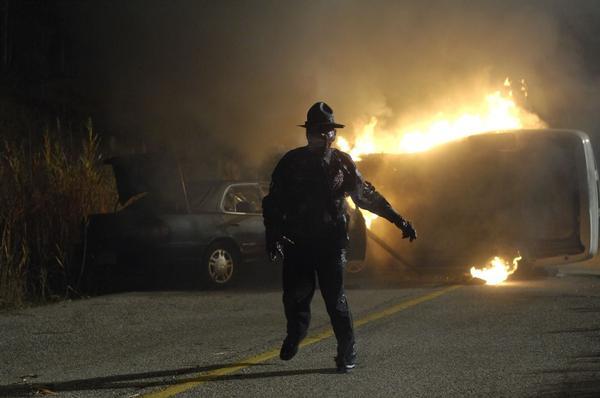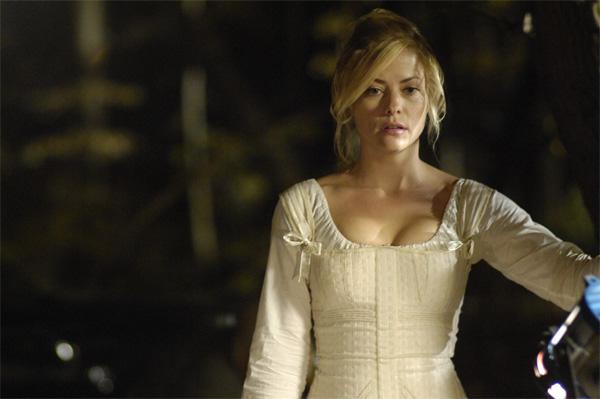
Watch the Video of the BFI and BAFTA special achievement award presented to RAY HARRYHAUSEN on the occasion of the master animator’s 90th birthday:
This fabulous 42 minute minute video includes comments from:
Directors:
- James Cameron
- Steven Spielberg
- Guillermo Del Toro
- Nick Park
- Frank Darabont
- John Landis (Host)
With guest speakers:
- Sir Christopher Frayling
- The Tortoise and the Hare Animators
- Randy Cook
- Colin Arthur (mask-maker)
- Gary Raymond and John Cairney
- Phil Tippett, Dennis Muren & Ken Ralston
- Tony Dalton & Vanessa Harryhausen
- Ray Bradbury
- Peter Jackson
(Jackson shows his rare amateur film inspired by Harryhausen and presents a special BAFTA Award to Ray.)
_________
LAWRENCE FRENCH: In your earlier films, although you didn’t have star names, you always had excellent British character actors, such as Douglas Wilmer, Laurence Naismith and Patrick Troughton. In fact, all those actors appeared in Sir Laurence Olivier’s film version of Richard III. Did you see Richard III when in came out in 1955?
RAY HARRYHAUSEN: Oh yes, although that was many years ago. And as you say, we always had very talented actors, even if they were not what today you would call stars. But they were all very competent actors: Douglas Wilmer was brilliant as King Pelias in Jason and later we used him in The Golden Voyage of Sinbad as the Grand Vizier. Laurence Naismith was also in Jason, and we used him again in The Valley of Gwangi.
LAWRENCE FRENCH: What led you to stop making movies after Clash of the Titans?
RAY HARRYHAUSEN: I had enough of spending my time in a dark room after everybody else went home. I spent most of my life in a dark room, painted black, which can be depressing if you are aware of it, although I was never aware of it. I also felt that tastes had changed. After Clash of the Titans, we were going to do a follow-up and I helped Charles develop a script with Beverly Cross called Force of the Trojans, although a lot of the effects work would have been farmed out to someone else. But even though Clash had made a lot of money for MGM, they didn’t want to back it. They felt costume pictures weren’t suitable and the pictures the studios wanted you to make all had to have explosions in them every five minutes. So I’m grateful that I got in on the tail end of the great days of Hollywood.
LAWRENCE FRENCH: So once MGM passed on making Force of the Trojans, you finally decided to retire?
RAY HARRYHAUSEN: Yes, pretty much. I was able to spend most of my time doing the things I had always wanted to do for a long time. I began making bronze figures of some of the characters used in my films, and doing many other things, including getting re-acquainted with my family. Unfortunately, when you devote too much time to a film, you have very little time to see your family.
LAWRENCE FRENCH: Now that all your fairy tales and early films are out on DVD, are there any animation scenes that got cut which might be included on future DVD releases—such as the Ghoul fight from Sinbad and the Eye of the Tiger?
RAY HARRYHAUSEN: There’s not a great deal and once I finish a picture it’s out of my hands. I don’t recall the Ghoul sequence having been cut that much. It couldn’t have been that important, because I’ve looked at the picture on DVD and it didn’t bother me. I did have a sequence we cut from Jason and the Argonauts during the skeleton fight. After Jason cuts off one of the skeletons heads, the skeleton got down on his hands and knees to look for his head, but it slowed the whole pace of the scene down, so we decided to cut it out. Unfortunately, I never kept that footage. I should have saved it, but once you finish a film, you are so glad to be done, you don’t think about those kinds of things.
LAWRENCE FRENCH: What are you thoughts about the current state of the movie business compared to Hollywood in the forties when you were first starting out?
RAY HARRYHAUSEN: Well, today everyone is saturated with all sorts of entertainments, where in the good old days you looked forward to going to the movies on Saturday night and it was a big event in your life. The people who made pictures in the forties, the big studios and producers had great imagination. When you look back at some of those pictures, you see that they knew how to make the average person see things bigger than life for two hours. It was a relief or an escape that we all loved. But today, you are bombarded with so many different things: DVD’s, Television, the Internet, and everything else, so I think people become rather jaded. That means you have to go over the top, in the sense of showing more, to make it bloodier and more ghastly in order to top all previous productions. Where that will eventually lead, I have no idea. At the rate some of today’s horror films are going, only people who work in the slaughterhouse would care to see them. I think also, that today, the fantastic image is so overdone it no longer amazes you and they tend to do overly violent things. It’s like the Emperor’s New Clothes—you have to disguise the fact that there’s nothing really there in the story with smoke, loud noises, 8-frame cuts and zoom-in and zoom-outs—all the techniques that cover up the fact that there’s no story. In some of today’s movies, you don’t even know what you’re watching. I saw The Matrix and I didn’t know what the picture was all about. When I see a picture I want to know what I’m looking at. When characters are introduced I want to know who they are and what relation they have to the hero. But today there are no more heroes. There are only anti-heroes. So it’s a different world. Everything is so negative I don’t even feel like I’m part of the film business anymore.

